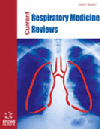-
s Empyema and Bronchopleural Fistula Following Lung Resection
- Source: Current Respiratory Medicine Reviews, Volume 8, Issue 4, Aug 2012, p. 274 - 279
-
- 01 Aug 2012
Abstract
Formal resectional surgery for benign and malignant diseases of the lungs was one of the last frontiers to be explored and mastered within the broad specialty of surgery. This was the result of the unique physiological properties of the pleural space and the mechanics of respiration. Additional obstacles included the requirement for refined anesthesia, surgical techniques and equipment in order to allow successful control of the airway and vasculature. Despite impressive and ongoing improvement in operative technique, anesthetic management, patient selection and perioperative care, the complexities unique to the airway, pleural space and rigid chest wall continue to make pulmonary resection a challenging undertaking. Post-resection bronchopleural fistula and post-resection empyema, while relatively uncommon, remain perhaps the most morbid and difficult complications encountered in thoracic surgery. Understanding of and adherence to basic principles of management as well as the thoughtful application of innovative therapies have resulted in improved outcomes when these dreaded complications occur.


